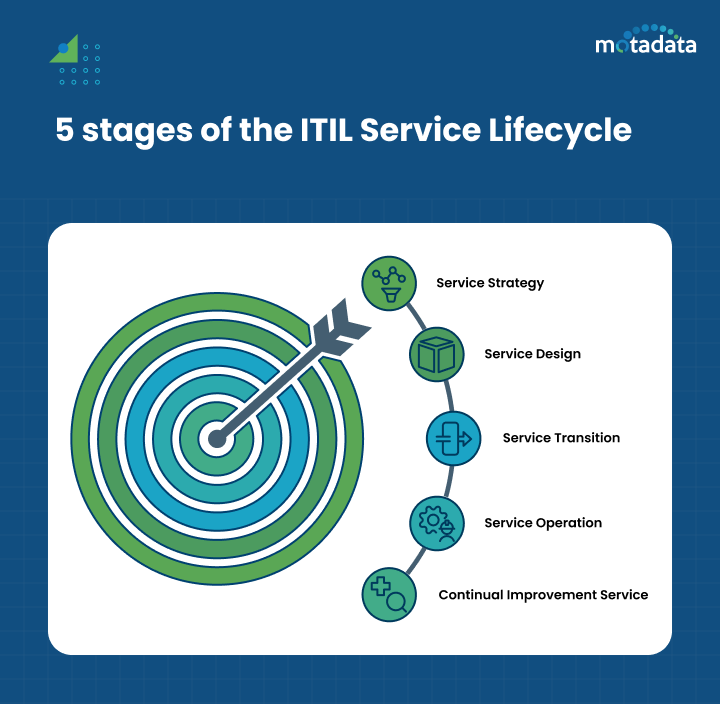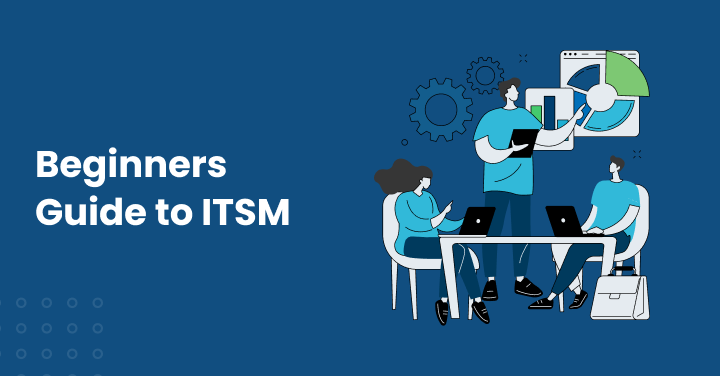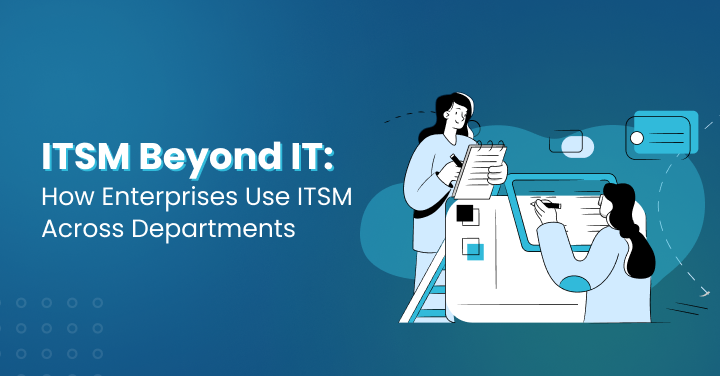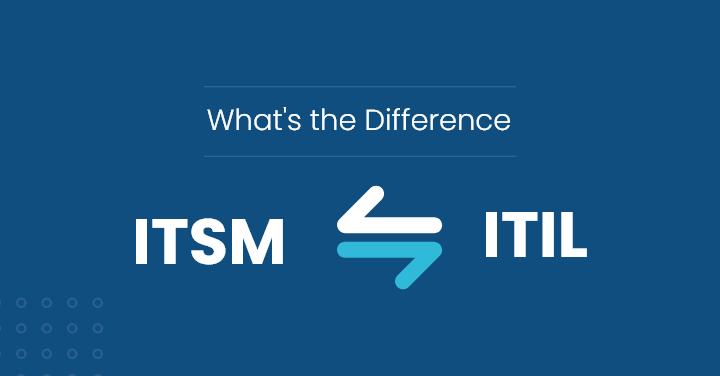With digital transformation, a lot of business dynamics have changed. Businesses adapt and invest in new technologies, tools, and IT services to stand ahead of competitors. On one end, these new practices benefit businesses; on the other end, it is making it difficult to manage the evolving complexities. IT services can become chaotic without proper management, leading to inefficiencies and poor customer experiences. It can further damage the goodwill of any business, and this is where the ITIL (Information Technology Infrastructure Library) practice comes into play.
ITIL is a structured approach or framework that helps manage IT services better. By incorporating this framework into business, IT teams can deliver high-quality services aligned with business needs and enhance customer satisfaction. Further, adapting this practice can help reduce downtime, manage risks, and optimize resources efficiently. By following ITIL guidelines, businesses can prevent IT-related disruptions, improve team collaboration, and ensure that IT services are cost-effective and reliable.
Instead of fixing issues reactively, ITIL encourages organizations to identify and resolve potential problems proactively before they impact users. This enhances efficiency and reduces operational costs in the long run. The ITIL framework has five stages: Service Strategy, Service Design, Service Transition, Service Operation, and Continuous Service Improvement. In this blog, we will discuss the ITIL lifecycle stages in detail. Further, we will cover each ITIL service lifecycle stage’s key processes and the best practices an organization must implement for business success and growth.
The 5 stages of the ITIL Service Lifecycle
Organizations can manage IT services efficiently by implementing the ITIL Lifecycle stages listed below. This framework will not only enable organizations to improve their service quality but also reduce downtime and drive continuous improvement, resulting in a better customer experience. There are several benefits associated with ITIL, which we will cover in these stages. Let’s discuss these five stages, their key processes, and best practices.
Stage 1: Service Strategy
The Service Strategy is the primary stage of the ITIL service lifecycle that focuses on ensuring IT services align with organizational goals. It establishes an organization’s approach to managing IT services, identifying opportunities, and developing strategies to prevent service inefficiencies. Some of the key objectives of the service strategy stage are:
- Value Creation: Create a detailed service catalog to ensure IT services deliver measurable business value.
- Financial Management: Better manage resources and associated IT service costs for smooth operations.
- Demand Management: For business continuity and customer satisfaction, balance the supply and demand of services.
To achieve these objectives, it is essential to manage key processes that come under this stage, such as:
- Strategy Management of IT services: Define and set goals for IT services aligning with business needs
- Demand Management: Managing the resources and IT service requirements based on customer needs.
- Service Portfolio Management: Governs all IT services offered and ensures they match the company’s needs
- Financial Management for IT Services: This handles budgeting, accounting, service charges, and financial planning.
- Business Relationship Management: Maintains strong communication between IT service providers and customers.
Here are a few best practices that IT teams must follow for the practical service strategy stage:
1. Develop a strategic roadmap outlining IT service improvements that support business growth and review IT strategies regularly.
2. Categorize services into critical, essential, and non-critical sections to prioritize resource allocation and reduce operational costs.
3. Perform regular service reviews to determine whether a service should continue, be upgraded, or be discontinued.
4. Implement customer satisfaction surveys to measure service effectiveness.
5. It is best to develop a transparent IT budgeting process that will enable team members to track regular IT infrastructure, software, and support services expenses.
Stage 2: Service Design
Service Design is another critical stage that focuses on creating and modifying IT services based on the ideas or plans built in the last stage. It is a well-structured design that aims to develop services that prioritize customer needs and exceed their expectations. Some of the key elements of the ITIL service design principles are:
- Service Catalog Management: Creates and manages an updated list of available services in detail. This catalog provides more insights into the services, i.e., their availability, pricing, etc.
- Capacity Management: Ensures IT services have enough resources to meet current and future demands. This includes managing system performance, storage, processing power, and network capacity.
- IT Security Management: Responsible for protecting services from threats by implementing robust security controls.
- Availability Management: Makes sure that IT services are available at all times to meet business needs.
- Supplier Management: Responsible for managing relationships with third-party vendors
- Service Continuity Management ensures that IT services can continue operating or recover quickly during a cyberattack or other significant disruption.
- Service Level Management: Responsible for managing SLAs and tracking IT service performance against agreed SLAs
Here are some of the best practices that IT teams must adopt for effective service design:
- Identify your business priorities and design services accordingly, aligning with your business objective.
- Run risk assessments regularly to identify vulnerabilities in your system and implement backup and recovery to prevent data loss.
- Use automation tools to streamline services and reduce errors and manual work.
- Ensure that resources such as servers, networks, and applications can handle business demands and address availability issues.
- Provide regular reports on SLA performance and discuss improvements and areas that need more attention with stakeholders.
Stage 3: Service Transition
The Service Transition stage ensures that newly developed or modified services are deployed seamlessly without disrupting business operations. It can also be called the actual construction process, which connects the service design phase with live operations. This stage focuses on risk management, change control, and knowledge management systems.
Here are some of the key processes of the Service Transition stage:
- Change Management: This process ensures that any modifications to IT services, whether big or small, are carefully planned, reviewed, and executed. Thus reducing risks and business disruptions by documenting and regularly monitoring changes.
- Release and deployment Management: This process controls and organizes the rollout of software updates, infrastructure changes, or new applications.
- Knowledge Management: This process ensures that all relevant information about IT services, common issues, and solutions is documented in a centralized knowledge base for faster resolution and user reference.
- Transition Planning and Support: Focuses on coordinating resources and risk management for smooth service transitions.
- Change Evaluation: Assesses changes before implementation. Thus preventing disruptions and reducing risks associated with IT modifications.
- Service Validation and Testing: Ensures new or changed IT services meet business requirements before being deployed into the live environment.
- Service Asset and Configuration Management: Tracks, controls, and maintains IT assets and configuration items.
For a successful service transition, it is necessary for organizations to implement these strategies to minimize risks and ensure a smooth transition:
- Before making a new change or implementing a new service, run thorough tests to identify potential issues and check security features.
- Ensure all team members and stakeholders communicate clearly to prevent misunderstanding and delays.
- Implement a rollback plan, a backup strategy for unforeseen events. These plans help avoid data loss in case of failure by quickly restoring the previous version.
- Store detailed information about configuration items (CIs) and their dependencies and ensure each IT asset meets licensing and regulatory requirements.
- Evaluate how the proposed change affects IT services and business operations, assess risk, and categorize it into different levels based on impact. Make sure each change is assessed correctly before proceeding to the approval stage.
Stage 4: Service Operation
The Service Operation stage is the core of the ITIL lifecycle that focuses on managing daily tasks and processes essential for the smooth functioning of IT services. This stage involves monitoring performance, resolving incidents, and managing service requests efficiently. Some of the core processes in Service Operation include:
- Incident Management: It helps restore IT services to normal as quickly as possible when an issue occurs. A network failure, software bug, etc., can disrupt IT service functioning. However, with incident management strategies, IT teams can restore processes faster.
- Problem Management: This process goes beyond just incident management. Instead of just fixing the potential problem, it identifies the root cause and troubleshoots the issue before it escalates, further preventing the problem from happening again in the future.
- Event Management: Monitors system activities to detect potential threats or failures. Non-critical events, such as server crashes, can escalate the problem. Hence, constant event monitoring is essential to avoid system shutdown.
- Request Fulfillment: Responsible for managing and processing user requests for IT services, i.e., password reset, software installations, etc. This process makes sure that each request is recorded and handled based on urgency and type.
- Access Management ensures that users have the appropriate permissions to access IT services and systems while preventing unauthorized access.
To ensure a smooth and efficient service operation, here are a few best practices that organizations must follow:
- Rather than manually handling IT tasks, it is best to incorporate automation tools to reduce human error and inefficiencies. Automation tools may further aid in ticket management, backups, etc.
- It is essential to train your support team and IT staff on the latest technologies and tools so they can resolve issues in real time. Run workshops or training sessions to introduce them to new tools and processes.
- Incorporate Multi-Factor Authentication (MFA), Role-Based Access Control (RBAC), Least Privilege Principle, or Single Sign-On (SSO) features only to allow assigned roles to access information necessary to perform tasks.
- Implement predefined workflows for common requests to ensure quick and consistent fulfillment. Track each request and performance metric to improve service efficiency.
Stage 5: Continual Service Improvement (CSI)
Continual Service Improvement (CSI) is one of the essential ITIL lifecycle stages as it focuses on regularly evaluating and enhancing IT services. This stage is designed to help IT teams analyze performance metrics and feedback necessary for identifying areas for improvement. By periodically assessing and refining IT processes, organizations can maintain high-quality services. Some of the key CSI processes are:
- Service Review: Assesses the performance of IT services to ensure they align with business objectives. It helps identify performance gaps and areas that need improvement.
- Performance Evaluation: Analyze key Performance Indicators (KPIs) to measure the success of each service and track whether it meets customers’ expectations.
- Process Refinement: Updates existing processes to improve efficiency and effectiveness.
- Definition of CSI Initiatives: Identifying areas that require improvement and planning structured initiatives to enhance IT services.
- Monitoring of CSI Initiatives: Makes sure that the progress of improvement initiatives are appropriately tracked and measured.
To ensure that the Continual Service Improvement process is effective, organizations must consistently measure success through various methods:
- Monitor KPIs, i.e., response time, system uptime, etc., and track deviations.
- Run surveys or ask customers to complete feedback forms to gain valuable insights into service effectiveness and understand user experience.
- Evaluate initiatives based on impact and business priorities, resulting in the early management of significant issues and reduced service downtime.
- Regular service audits help identify issues and opportunities for improvement.
- Implement multi-factor authentication and other practices to enhance security measures and reduce service downtime.
Conclusion
The ITIL (Information Technology Infrastructure Library) lifecycle offers a structured framework for managing IT services efficiently, ensuring alignment with business goals. By implementing ITIL, businesses can benefit from enhanced service quality, improved customer satisfaction, reduced downtime, and optimized resource utilization.
There are five stages of the ITIL lifecycle—Service Strategy, Service Design, Service Transition, Service Operation, and Continual Service Improvement— together they can help IT teams create a robust IT service management (ITSM) system. Adopting this holistic approach will further help organizations streamline processes, reduce operational risks, and enable teams to track areas for improvement.
To implement ITIL effectively, businesses need to have a clear understanding of their organizational goals. From establishing the direction of IT services in Service Strategy to preserving service performance in Service Operation, each step of the ITIL service lifecycle has specific goals and tasks. So, make sure to have clarity before proceeding with the next stage.
Further, the team members must know how these IT services can contribute to achieving these goals. Organizations must invest in training sessions and ITIL certifications for their employees to guide them on tools and processes—further, automation to reduce human error and enhance efficiency. Regular performance monitoring is also essential to the process as it will help identify threats before they affect users.
Like new emerging technologies, such as artificial intelligence (AI), machine learning, and automation, ITIL and ITSM are expected to evolve. Hence, invest in the right tools and stay updated with these trends to deliver exceptional IT services and stay ahead of your competitors.
FAQs:
The ITIL Service Lifecycle is a structured approach to IT service management. It is a five-stage plan that helps businesses deliver high-quality IT services and achieve organizational goals.
The ITIL service lifecycle is essential for businesses as it helps improve service quality and guarantees customer satisfaction. Organizations can deliver cost-effective and efficient IT services that align with business goals by implementing this framework.
The ITIL Service strategy stage enables better resource management, opportunity identification, service portfolio planning, financial management, and business objective definition. This stage helps businesses reach their goals while maintaining good customer relationships.
Service design is another crucial stage that focuses on improving service quality and delivering a better user experience. By using this stage best, IT teams can ensure scalable, secure, and reliable IT services, resulting in smoother operations and satisfied users.
ITIL is a flexible framework that evolves with emerging technologies like AI, cloud computing, DevOps, and other practices. This makes it an important and useful practice for better handling the complexities of an IT environment.








